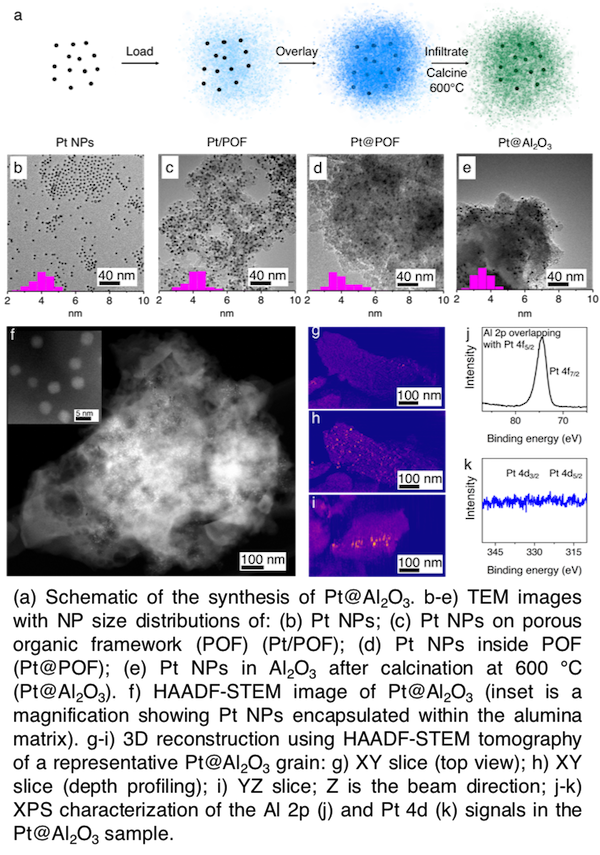2022 Annual Meeting
(98a) Templated Encapsulation of Pt-Based Catalysts Promotes High-Temperature Stability to 1,100 °C
Authors
Aisulu Aitbekova - Presenter, Stanford University
Matteo Cargnello, Stanford University
Simon Bare, SLAC National Accelerator Laboratory
Noble metals are active catalysts in various processes (e.g. automotive exhaust emission control and photoelectrochemical CO2 reduction) due to their favorable chemical properties, such as optimal binding energies and resistance to oxidation. To optimize the use of these scarce and expensive materials, the metals are made in the form of nanoparticles immobilized on metal oxides. Under harsh operating conditions (e.g., high temperature, oxidizing environment, steam), however, these nanoparticles deactivate and become less efficient in facilitating the desired chemical transformations. The major deactivation pathway occurs due to sintering â a process in which initially small particles grow into large crystallites with reduced active surface area. Researchers have proposed several anti-sintering strategies, such as encapsulation of metal particles inside mesoporous silica and zeolites, core-shell nanoparticles, compartmentalization, and strengthening metal-support interactions. However, most of these approaches lead to activity-stability trade-offs where higher stability is achieved at the expense of lower activity. To address this challenge, I have developed stable platinum (Pt) catalysts that are as active as conventional systems by encapsulating Pt nanoparticles inside porous aluminum oxide. These materials do not deactivate at 800 °C in the presence of oxygen and steam, conditions encountered in automotive exhaust emission control that neutralizes noxious gases produced by vehicles operating on fossil fuels. Extending this approach to palladium-platinum (PdPt) bimetallic nanoparticles leads to even better stability results: the particles preserve their size at temperatures as high as 1,100 °C in air and steam. Furthermore, these materials operate under industrially-relevant conditions for at least 50 hours on stream without any loss in the activity. Overall, the encapsulation strategy can be broadly applied to other metal and metal oxides for applications where sintering is a major cause of materials deactivation.


